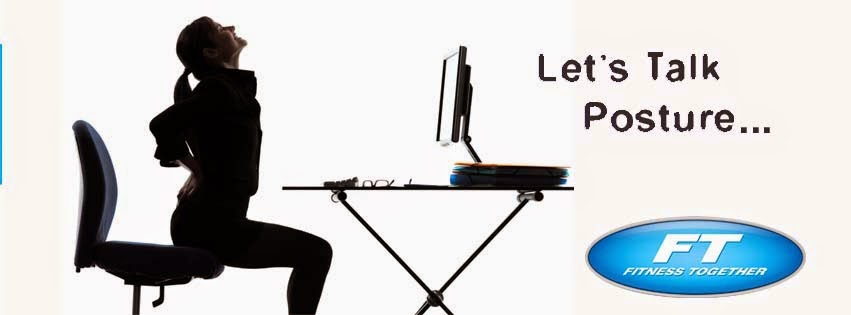Exercises to Help Correct Your Posture
Do you sit all day at a desk or in a car for work?
If so, this informational blog post is for you!
By: Sean Sullivan
As human beings, our bodies are not designed for the less active, non-hunter-gatherer lifestyles of today's world. The evolution of our spine just hasn't caught up yet. The natural s-shape of our spinal column is meant to support our balance and stabilization while in a standing position, walking on two legs. These days, so many of us spend hours on end in a chair or a car completing our jobs. After work we spend even more time sitting on the sofa catching up on our favorite sitcom or on the bleachers cheering for our children. This is why it's so important to schedule planned exercise time to keep your body active, healthy and strong; however, you must correct your posture first so that you're not doing more harm than good during your workouts.
When we spend so much of our time in this hunched over, seated position we are creating several imbalances in our bodies. I'm not talking about the kind of balance that allows you to stand on one leg or walk with a book on top of your head...I'm talking about equality throughout your body. Let's consider splitting your body in half a few ways: a.) your right half vs. your left half, b.) your top half vs. your bottom half, and c.) your front half vs. your back half. Ideally we would like each half to be just as strong and just as flexibly as its counterpart. When we create imbalances in our bodies, one of these halves becomes tight and it's opposing side becomes weak. In the case of excessive sitting this imbalance typically arrives as letter "C" creating an issue with our front half vs. our back half.
So, where are these posture imbalances caused by sitting at a desk all day? How do I fix them? It's actually a lot more simple than it may seem. The muscles in the front of your body, mainly your chest and hip flexors will be tight; and, the muscles in your back such as your upper back, lower back and glutes will be weak. To correct your posture, you will want to incorporate exercises to strengthen your back and glutes into your routine. In addition, find some stretches to increase the range of motion and flexibility for your pecs and hip flexors. Here is a video where I demonstrate some additional tips and examples:
Unfortunately, for some people these posture imbalances may have progressed to a point where excessive pain in your lower back, knees or other joints may prevent you from immediately beginning an exercise routine. Please consult your physician or chiropractor before beginning an exercise program.
©
2015 Fitness Together, Inc. All Rights Reserved. Powered by Fusionbox.
About | Contact | Franchise | Suppliers | History | Leadership | NutritionTogether |Sitemap
| PrivacyPolicy | TermsofUse | Facebook | YouTube | Twitter | Linkedin


Great post!
ReplyDelete